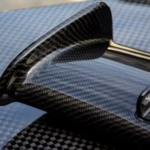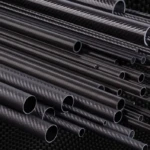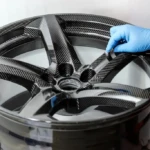As a leading provider of five-axis CNC machining services, outstanding light has extensive experience in providing high-precision parts to various industries. One of the key areas of expertise is CNC block processing, a process involving removing material from metal or other materials to create the desired shape or design. In this article, we will dig into the basics of CNC block processing and explore its principles, applications and benefits.
CNC block processing is a subtraction manufacturing process that uses a computer numerical control (CNC) machine to remove materials from workpieces. The process starts with a piece of material and is then mounted on a CNC machine. The machine reads the design file and starts removing the material using cutting tools such as mills, drills, or lathes. The advanced software and precise motion control of CNC machines enable it to create complex shapes and designs with high accuracy and speed.
One of the main advantages of CNC block processing is its versatility. This process can be used to process a variety of materials, including metals, plastics and wood. Additionally, CNC block machining can produce parts with complex geometric shapes and tight tolerances, making it an ideal choice for industries such as aerospace, automotive and medical equipment.
Another important benefit of CNC block processing is its efficiency. This process allows for rapid prototype and production, reducing lead times and increasing productivity. Additionally, CNC machines can run all day, minimizing downtime and maximizing output. This makes CNC block processing an attractive option for mass production and timely manufacturing.
In terms of application, CNC block processing is used in various industries, including:
*Aerospace: CNC block processing is used to produce aircraft components such as engine parts, landing gear and structural components.
*Auto: This process is used to manufacture engine blocks, cylinder heads and transmission components.
*Medical Equipment: CNC block processing is used to produce implantable equipment, surgical instruments and medical equipment.
*Consumer Products: This process is used to manufacture components used in consumer electronics, appliances and other household items.
To ensure the quality and accuracy of CNC block processing, it is crucial to choose the right machine and cutting tool. The choice of the machine depends on the specific application, material and design requirements. For example, for complex geometry, a five-axis CNC machine may be required, while a three-axis machine may be sufficient to achieve a simpler design. Likewise, the choice of cutting tools depends on the material and the required surface finish.
In short, CNC block machining is a powerful manufacturing process that provides versatility, efficiency and accuracy. Its applications cover a wide range of industries from aerospace to consumer products. By understanding the basics of CNC block machining, manufacturers can unlock the full potential of the technology and produce high-quality parts with complex geometric shapes and tight tolerances.
FAQ:
Q: What is CNC block processing?
A: CNC block processing is a material that uses a computer numerical control (CNC) machine to remove materials from blocks of metal or other material to create the desired shape or design.
Q: What are the benefits of CNC block processing?
A: The benefits of CNC block processing include versatility, efficiency and accuracy. The process can process a variety of materials, produce parts with complex geometry and tight tolerances, and run around the clock.
Q: Which industries use CNC block processing?
A: CNC block processing is used in various industries including aerospace, automotive, medical equipment and consumer products.
Q: What is the difference between a three-axis and a five-axis CNC machine?
A: A three-axis CNC machine can move in three axes (x, y and z), while a five-axis machine can move in five axes (x, y, z and two rotation axes). Five-axis machines are required for complex geometry and tight tolerances.
Q: How to choose the right cutting tool for CNC block processing?
A: The choice of cutting tools depends on the material and the required surface finish. A CNC machining expert must be consulted or research must be conducted to determine the best cutting tool for a specific application.

















